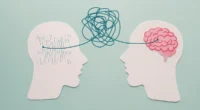There are various causes of left sided headache. Understanding the possible causes and their treatments can help a person manage pain and know when to seek professional care.
About 50 percent of adults worldwide suffer from headaches. Some headaches are mild and resolve with home remedies, but some are more severe and require medical attention.

If the headache is accompanied by blurred vision, nausea, or any other symptom that is cause for concern, seek medical attention. A person needs emergency care if they have a sudden, severe headache and weakness or confusion on one side of the body.
This article discusses the symptoms, causes and treatment of left sided headache. It also provides more information about when to see a doctor.
Types Overview
Many types of headaches can cause pain on the left side, including migraines and cluster headaches. We describe them in detail below.
Generally, doctors classify headaches as either “primary” or “secondary.” For a person with a primary headache, pain is the primary symptom. Secondary headaches are the result of another health problem, such as:
- A brain tumor
- A stroke
- An infection
The resulting headache can be anywhere, including the left side.
Migraine Headaches
Migraines can cause moderate to severe headaches on the left side. The condition affects 12% of people in the United States, including 17% of women and 6% of men.
Migraine headaches can be throbbing and worse on one side. The pain may start around the eye or temple, then spread to the head.
Some other symptoms of migraine include:
- Changes in perspective
- Nausea and vomiting
- Hypersensitivity to sound, light, touch, or smell
- Dizziness
- Numbness or a tingling sensation in the face or limbs
A rare type of migraine, called hemiplegic migraine, can also cause weakness on one side of the body and in the face.
A migraine attack usually lasts 4-72 hours. A person may need to lie down in a dark room and rest until symptoms subside.
Experts don’t understand the exact causes, but genetic factors and environmental triggers appear to play a role.
Common triggers include:
- Stress, a factor in 80% of cases
- Flashing lights or lights that blink
- Hormonal changes, present in 65% of cases.
- Too much or too little sleep
- Certain foods, such as alcohol, cheese, and chocolate
- Fragrance, such as perfume
Cluster Headaches
Cluster headaches can cause severe pain on one side of the head, often around the eyes. The pain can be very severe, and it may feel sharp, burning, or piercing.
About 1% of people in the United States experience cluster headaches. When this happens, the headaches occur in episodes lasting 4-12 weeks, then stop, possibly for several years. They often affect the same side each time.
Common features include:
- Pain behind one eye, one temple, or one side of the forehead
- Pain that peaks after 5-10 minutes.
- Pain that starts at night, usually 1-2 hours after going to bed
- Less severe pain that may last up to 3 hours.
- Severe pain that lasts 30-60 minutes.
Associated symptoms may include:
- A stuffy or runny nose
- A drooping eyelid
- A sweaty or sweaty face
- Watering and redness in one eye
The exact cause is unknown, but experts believe it involves a part of the brain called the hypothalamus and the nerves and blood vessels of the trigeminal system that affect the eyes and face.
Cervicogenic Headaches
This type of headache can be the result of an injury to the neck, such as whiplash, or arthritis or other changes in the vertebrae in the upper spine.
This can cause:
- Moderate to severe pain that starts in the neck and spreads to one side of the eye and face.
- Sensitivity to light and sound
- A stiff neck and reduced range of motion
- Pain around the eyes, neck, shoulders and arms
- Blurred vision
- Nausea
Steroid injections and nonsteroidal anti-inflammatory drugs, such as ibuprofen (Advil), can help control pain. With treatment, cervicogenic headaches should resolve within 3 months, although they may recur.
Vasculitis
An autoimmune attack in which the body reacts as if there are harmful substances in its blood vessels can lead to vasculitis, a type of inflammation of the blood vessels.
A common type of vasculitis is giant cell arteritis, also known as temporal arteritis. This affects the blood vessels in the head. It usually occurs in people over the age of 50.
Vasculitis can cause headaches that resemble “thunderclap headaches.” The pain is intense, and often has no obvious cause. With a thunderclap headache, the pain is most severe within 1 minute and lasts at least 5 minutes. As with a similar headache due to vasculitis, the pain may take a little longer to develop.
Other symptoms may include:
- Sudden loss of vision
- Pain on one side of the head or behind the eye
- Pain when chewing
Anyone experiencing these symptoms should seek medical advice. Untreated vasculitis can result in permanent vision loss.
Brain Aneurysm
A cerebral aneurysm is a weak spot in a blood vessel in the brain. It usually doesn’t cause symptoms until it ruptures. In this case, potentially life-threatening hemorrhage can result.
A person may develop a thunderclap headache, which is a sudden, severe pain. They may feel as if they have been hit on the head, and may have weakness on one side of their body.
Other possible symptoms include:
- Neck pain or stiffness
- Visits
- Nausea and vomiting
- A change in perspective
- Loss of consciousness
- Light sensitivity
- Get confused
Left-sided headaches can result from migraines, vasculitis, cluster headaches, or other types.
Often, a person can treat a headache at home with over-the-counter remedies and rest. However, if the headache is severe, persistent, or otherwise, contact a health care professional.
Anyone with a sudden, severe headache and weakness or confusion on one side of the body needs emergency care.









